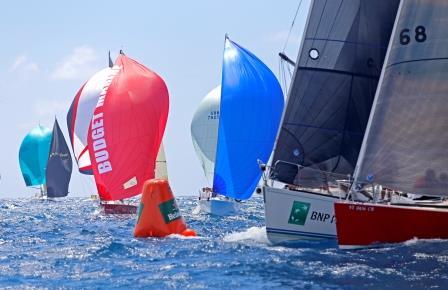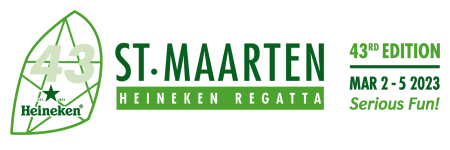
Magic Numbers
[et_pb_section bb_built=”1″ _builder_version=”3.29.3″ background_color=”#ffffff” custom_padding=”0px|||” box_shadow_horizontal_tablet=”0px” box_shadow_vertical_tablet=”0px” box_shadow_blur_tablet=”40px” box_shadow_spread_tablet=”0px” z_index_tablet=”500″][et_pb_row _builder_version=”3.29.3″ width=”100%” box_shadow_horizontal_tablet=”0px” box_shadow_vertical_tablet=”0px” box_shadow_blur_tablet=”40px” box_shadow_spread_tablet=”0px” z_index_tablet=”500″][et_pb_column type=”4_4″][et_pb_image _builder_version=”3.29.3″ align=”center” box_shadow_horizontal_tablet=”0px” box_shadow_vertical_tablet=”0px” box_shadow_blur_tablet=”40px” box_shadow_spread_tablet=”0px” z_index_tablet=”500″ src=”/wp-content/uploads/2016/07/4323_140307_GRIESER_0938.jpg” force_fullwidth=”on” /][et_pb_text]
For nearly a decade, Paul Miller has been working with the St.Maarten Heineken Regatta, advising the race committee on such matters as managing the entries, class divisions and publishing results through his company regattaguru.com. With One-Design Classes, the winner is easy to establish, subject to protest or a claim for redress, the first to finish is the winner. However, at the St.Maarten Heineken Regatta a huge variety of boats race within a class that are not one-design. The Caribbean Sailing Association (CSA) rating system is used to give a time correction to the yachts racing in CSA classes. This corrected time decides the winner rather than just a matter of who crosses the line first.
Paul Miller explains some of the dark arts of deciding how to split, the huge variety of boats at the St.Maarten Heineken Regatta, into separate classes using the CSA rating system.
“The St.Maarten Heineken Regatta has the magic of large numbers, which means that any style of boat can come to the regatta and enjoy competitive racing. Quality class splits are only made possible when there are enough boats to facilitate good classes. The St.Maarten Heineken Regatta is one of the regattas in the Caribbean that always has enough boats to do this and people come to the regatta specifically because they know they will be racing in larger and more competitive classes than they get at home.
For example, last year we had a class of similar boats, all around 40ft, racing in a 16 boat class and the racing was incredibly tight. If you just look at the results in each race, it might look like just a few of the boats were dominate but if you look more closely at the corrected time differences across the class, you will see that the winners had a really hard time of it. Just seconds decided the racing. So the winner is decided by which crew sails the best, rather than who has the best boat.
One of the key decisions we make, unlike other regattas, we don’t just split boats by their CSA rating. Where ever possible, we try to keep similar boats racing against each other. For example we will not put a heavy displacement Swan with a Melges 24 or mix performance boats and cruising yachts, even if their rating is similar.
Our first challenge is to try to keep boats in classes where they are close-racing on the water and to keep performance boats away from the cruising style boats but that is not always possible, because sometimes it is really hard to fit an unusual boat into one criteria or another.
However some time ago, the St.Maarten Heineken Regatta decided it was important to have large classes, so we don’t make up small classes of unusual boats. Sailors like large classes, it is much more fulfilling to be third in an ten boat class than third in a four boat class. We try desperately to avoid classes smaller than five and with the large entry each year, that has been achieved for several years now. In a larger class, getting on the podium is proof that you have struggled against good competition and against a range of boats. Keeping the class sizes at five or more, makes the competition fierce and the satisfaction of winning much greater.
Choosing a mixture of courses is also a key area for fair racing, especially when a class has a mixture of boats flying asymmetric and symmetric sails. In recent year’s the CSA rule has been adapted to take this difference into account but the choice of course will favour one style or another.
So the variety of courses at the St.Maarten Heineken Regatta is a major draw for competitors and each year we look at the development of racing yachts and try to sweeten the mix to keep the racing fair. We monitor how close the racing is and last year, the top third of the boats across the classes was about 3% more competitive than the previous year and we believe that the subtle changes we made to the rule have tightened up racing even more.
The CSA rule succeeds so well because it is designed for Caribbean conditions, we don’t have to try to rate boats for very light wind conditions or for gales. The Caribbean has a narrower range of conditions. The long term average wind speed for the St.Maarten Heineken Regatta is about 16 knots with an average year showing a wind speed of between 14 – 20 knots.
For newcomers to the regatta, I would explain that the CSA system allows you to measure two headsails and you can choose prior to the regatta, which headsail you will use and your rating will be on that decision. My advice is leave your 150% jib at home, you won’t use it and think about which spinnakers to use, as you are more likely to be racing in 14 knots plus at the regatta. Any of the CSA measurers will give you good advice when you come. I would also suggest that you study sea currents and local effects, current can run at up to two knots and make use of the bays, you can get some miracle lifts off the land at this regatta.”
At registration for the St.Maarten Heineken Regatta, a CSA Measurer will be in their office located at the St Maarten Yacht Club. However, it is advisable to contact the CSA prior to the event, especially for a new certificate. There is a dedicated web site for the CSA, which details how to get a CSA certificate for your yacht including contact details of measurers throughout the Caribbean. Visit http://caribbean-sailing.com/
Celebrating its 35th anniversary, the St. Maarten Heineken Regatta is considered to be the biggest regatta in the Caribbean and offers a great combination of challenging races and fantastic parties: “Serious Fun”!
“The St.Maarten Heineken Regatta has the magic of large numbers, which means that any style of boat can come to the regatta and enjoy competitive racing. Quality class splits are only made possible when there are enough boats to facilitate good classes. The St.Maarten Heineken Regatta is one of the regattas in the Caribbean that always has enough boats to do this and people come to the regatta specifically because they know they will be racing in larger and more competitive classes than they get at home.
For example, last year we had a class of similar boats, all around 40ft, racing in a 16 boat class and the racing was incredibly tight. If you just look at the results in each race, it might look like just a few of the boats were dominate but if you look more closely at the corrected time differences across the class, you will see that the winners had a really hard time of it. Just seconds decided the racing. So the winner is decided by which crew sails the best, rather than who has the best boat.
One of the key decisions we make, unlike other regattas, we don’t just split boats by their CSA rating. Where ever possible, we try to keep similar boats racing against each other. For example we will not put a heavy displacement Swan with a Melges 24 or mix performance boats and cruising yachts, even if their rating is similar.
Our first challenge is to try to keep boats in classes where they are close-racing on the water and to keep performance boats away from the cruising style boats but that is not always possible, because sometimes it is really hard to fit an unusual boat into one criteria or another.
However some time ago, the St.Maarten Heineken Regatta decided it was important to have large classes, so we don’t make up small classes of unusual boats. Sailors like large classes, it is much more fulfilling to be third in an ten boat class than third in a four boat class. We try desperately to avoid classes smaller than five and with the large entry each year, that has been achieved for several years now. In a larger class, getting on the podium is proof that you have struggled against good competition and against a range of boats. Keeping the class sizes at five or more, makes the competition fierce and the satisfaction of winning much greater.
Choosing a mixture of courses is also a key area for fair racing, especially when a class has a mixture of boats flying asymmetric and symmetric sails. In recent year’s the CSA rule has been adapted to take this difference into account but the choice of course will favour one style or another.
So the variety of courses at the St.Maarten Heineken Regatta is a major draw for competitors and each year we look at the development of racing yachts and try to sweeten the mix to keep the racing fair. We monitor how close the racing is and last year, the top third of the boats across the classes was about 3% more competitive than the previous year and we believe that the subtle changes we made to the rule have tightened up racing even more.
The CSA rule succeeds so well because it is designed for Caribbean conditions, we don’t have to try to rate boats for very light wind conditions or for gales. The Caribbean has a narrower range of conditions. The long term average wind speed for the St.Maarten Heineken Regatta is about 16 knots with an average year showing a wind speed of between 14 – 20 knots.
For newcomers to the regatta, I would explain that the CSA system allows you to measure two headsails and you can choose prior to the regatta, which headsail you will use and your rating will be on that decision. My advice is leave your 150% jib at home, you won’t use it and think about which spinnakers to use, as you are more likely to be racing in 14 knots plus at the regatta. Any of the CSA measurers will give you good advice when you come. I would also suggest that you study sea currents and local effects, current can run at up to two knots and make use of the bays, you can get some miracle lifts off the land at this regatta.”
At registration for the St.Maarten Heineken Regatta, a CSA Measurer will be in their office located at the St Maarten Yacht Club. However, it is advisable to contact the CSA prior to the event, especially for a new certificate. There is a dedicated web site for the CSA, which details how to get a CSA certificate for your yacht including contact details of measurers throughout the Caribbean. Visit http://caribbean-sailing.com/
Celebrating its 35th anniversary, the St. Maarten Heineken Regatta is considered to be the biggest regatta in the Caribbean and offers a great combination of challenging races and fantastic parties: “Serious Fun”!





